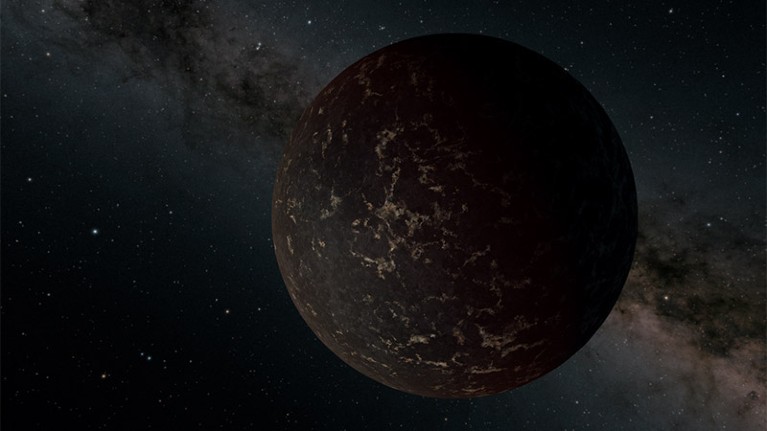This super-Earth has been officially verified as the initial planet to possess a perpetual shadowed hemisphere.
Substantial proof of 1:1 tidal locking was lacking until a recent examination of the exoplanet LHS 3844b.
In a recent publication in The Astrophysical Journal, researchers have presented their findings, which provide the strongest evidence to date of a phenomenon known as tidal synchronization or 1:1 tidal locking. This feature, observed on a planet, suggests that it is in a state where one side always faces its star, similar to the scenario where it is always night-time in the Western Hemisphere and always daytime in the Eastern Hemisphere.
Scientists believe that many exoplanets, including those with potential for sustaining life, exhibit this characteristic.
Nicolas Cowan, an astronomer from McGill University in Montreal, Canada, and one of the study’s co-authors, expresses the significance of these findings by stating, “This previously theoretical concept now appears to be a reality. These are the actual conditions that exist on these planets.”
Two sides of the story
When a planet orbits in close proximity to its star, the gravitational pull on its near side is significantly stronger than on its far side. This imbalance, known as tidal force, is believed to gradually slow down the planet’s rotation until it becomes perfectly synchronized with its orbit.
This means that the time it takes for the planet to complete one rotation on its axis is equal to the time it takes for it to complete one orbit around its star. The Moon is thought to have undergone this process, which explains why it always presents the same side to Earth.
Many exoplanets are also believed to be tidally locked in a 1:1 ratio due to their close proximity to their host star, but confirming this status is challenging. While measuring the orbit of an exoplanet is relatively straightforward, determining its rotation is much more difficult, especially if the planet has an atmosphere that obscures its surface.
To finally provide evidence for the tidal-locking hypothesis, scientists focused on a specific exoplanet called super-Earth LHS 3844b, which is located close to its star.
In 2019, researchers used the Spitzer Space Telescope to measure the intensity of light emitted by this planet. By analyzing these measurements, Cowan and his co-authors were able to determine the temperature of the planet’s surface that faces its star, assuming that the planet lacks an atmosphere.
Planets that are not tidally synchronized experience heating due to the conflict between their rotation and the strong tidal force exerted by their star. The team discovered that the surface of LHS 3844b was relatively cool, which aligns with expectations for a tidally locked planet.
Compelling case
Astronomer Emily Whittaker from the University of California, Los Angeles, points out that the assumption in the paper regarding LHS 3844b having no atmosphere may be challenged by a 2022 study she co-authored, which suggests the possibility of a thin, Earth-like atmosphere.
This could potentially complicate the argument presented in the new paper, although the evidence presented by the team does support the idea of tidal synchronization.
Further evidence is anticipated in the near future. Cowan mentions the significance of the James Webb Space Telescope (JWST) in this regard, as it will enable astronomers to investigate the rotation of exoplanets located slightly farther from their stars compared to LHS 3844b.
These planets, believed to be capable of sustaining an atmosphere and moderate temperatures, are thought to make up a significant portion of the habitable zone in the Milky Way. If the JWST confirms that these planets are tidally synchronized like LHS 3844b, Cowan suggests that a considerable number of planets, especially those suitable for life, are likely to be tidally locked.
Regarding the habitability of such planets, Cowan refrains from making any speculations at the moment. These worlds lack tides, seasons, or day-night cycles, raising questions about the potential diversity and complexity of life that could evolve in such environments.
doi: https://doi.org/10.1038/d41586-024-00414-z
Do not forget to share your opinion with us to provide you with the best posts !




0 Comments